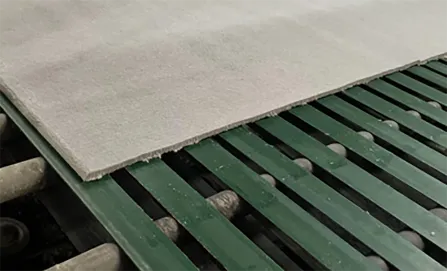- Afrikaans
- Albanian
- Amharic
- Arabic
- Armenian
- Azerbaijani
- Basque
- Belarusian
- Bengali
- Bosnian
- Bulgarian
- Catalan
- Cebuano
- Corsican
- Croatian
- Czech
- Danish
- Dutch
- English
- Esperanto
- Estonian
- French
- German
- Greek
- Hindi
- Indonesian
- irish
- Italian
- Japanese
- Korean
- Lao
- Malay
- Myanmar
- Norwegian
- Norwegian
- Polish
- Portuguese
- Romanian
- Russian
- Serbian
- Spanish
- Swedish
- Thai
- Turkish
- Ukrainian
- Uzbek
- Vietnamese
дек. . 19, 2024 22:05 Back to list
gypsum ceiling access panel
Understanding Gypsum Ceiling Access Panels
In modern construction and renovation projects, the efficiency and functionality of spaces play pivotal roles. One significant feature that contributes to this is the use of gypsum ceiling access panels. These panels, often overlooked, serve essential purposes in both commercial and residential buildings. This article delves into the significance, types, installation processes, and advantages of gypsum ceiling access panels, providing a comprehensive understanding of this often underappreciated component of contemporary architecture.
What Are Gypsum Ceiling Access Panels?
Gypsum ceiling access panels are specialized openings incorporated into ceiling structures to allow easy access to the space above for maintenance. Generally made from gypsum board or drywall, these panels blend seamlessly with the ceiling, ensuring aesthetics are not compromised. The panels are typically framed and can be found in various sizes to accommodate different needs, depending on what needs to be accessed – be it plumbing, electrical wiring, or HVAC systems.
Types of Gypsum Ceiling Access Panels
There are several types of gypsum ceiling access panels, each designed for specific functions and environments
1. Standard Access Panels Often used in residential settings, these panels provide access to crucial services like duct systems or plumbing. They are generally lightweight and easy to handle.
2. Fire-Rated Access Panels In commercial environments or multifamily residential buildings, fire-rated panels are essential. These panels have been treated to resist fire for a specified duration, contributing to the overall safety of the building. US regulations often dictate their use in certain areas.
3. Acoustic Access Panels Designed to improve soundproofing in spaces where acoustics are crucial, such as theaters or conference rooms, acoustic access panels not only provide access but also help in controlling sound transmission.
4. Thermal Insulated Access Panels In environments where thermal efficiency is vital, these insulated panels help maintain the temperature by minimizing heat transfer between the conditioned space and the area above the ceiling.
Installation Process
The installation of gypsum ceiling access panels is crucial for ensuring they function effectively while maintaining the overall aesthetic of the ceiling design. Here’s a general outline of the installation process
1. Planning and Measurement Before installation, proper planning and measurement are necessary. Consider what needs to be accessed and determine the appropriate panel size.
gypsum ceiling access panel

2. Cutting the Ceiling Using precise measurements, cut a hole in the ceiling where the panel will be installed. It is vital to avoid any framing or electrical components during this process.
3. Framing Install a frame within the cut-out area to support the access panel. This framing helps secure the panel and provides structural integrity.
4. Panel Placement Fit the access panel into the framed opening. Most panels come equipped with clips or fasteners to hold them in place.
5. Finishing Touches After securing the panel, final touches like painting or texturing can help blend the panel with the surrounding ceiling, ensuring a seamless look.
Advantages of Gypsum Ceiling Access Panels
The advantages of incorporating gypsum ceiling access panels into a building’s design are manifold
- Accessibility They provide easy access to vital systems, facilitating timely maintenance and reducing downtime in case of repairs.
- Aesthetic Appeal Gypsum panels can be finished to match the ceiling, preserving the uniformity and visual integrity of the space.
- Safety Features Fire-rated panels provide critical safety features in compliance with building codes, reducing fire hazards and promoting occupant safety.
- Versatility With various types available, gypsum ceiling access panels can be tailored to meet specific building needs, making them suitable for a wide range of environments.
Conclusion
Gypsum ceiling access panels are more than just functional openings in ceilings; they are crucial components that enhance the maintenance and safety of modern buildings. Understanding these panels—including their types, installation processes, and advantages—can aid architects, builders, and homeowners in making informed choices that contribute to the longevity and functionality of their spaces. As with many elements in construction, a thoughtful approach to the design and installation of access panels ensures they serve their purpose effectively while remaining an unobtrusive part of the overall architecture.
-
Transform Interiors with PVC Gypsum Ceiling: A Stylish, Durable, and Moisture-Resistant SolutionNewsMay.19,2025
-
The Smart Interior Upgrade: Discover the Durability and Versatility of Gypsum Ceiling Access Panel SolutionsNewsMay.19,2025
-
The Smart Choice for Interior Design: Discover the Value of PVC Gypsum Ceiling SolutionsNewsMay.19,2025
-
Mineral Fiber Ceiling Tiles: The Smart Blend of Performance and AestheticsNewsMay.19,2025
-
Mineral Fiber Ceiling Tiles: The Superior Choice Over Gypsum for Sound and Fire SafetyNewsMay.19,2025
-
Mineral Fiber Ceiling Tiles: Eco-Friendly Strength and Style for Every CeilingNewsMay.19,2025







